It is not often that great works of art lost for 70 years can be seen again in some form approximating their original appearance. Yet, that is now the case for several long-destroyed paintings by master Surrealist Salvador Dalí. An artist who certainly needs no introduction, Dalí was one of the most creative figures of the 20th century and left an indelible impression on every medium he touched. Beyond his world-renowned ability as a painter, the Catalan polymath practiced in fashion, cinema, opera, ballet, and writing. In 1943, Dalí was commissioned to pay homage to some of these artforms by the Broadway impresario Billy Rose, who wanted paintings to decorate the foyer of his newly acquired Manhattan theater, The Ziegfeld.
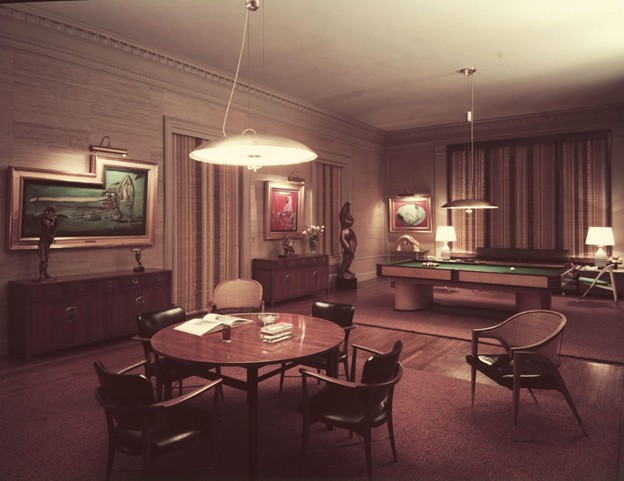
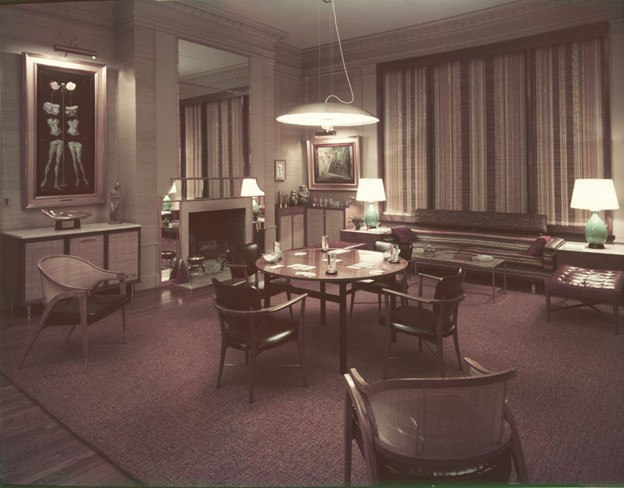
These paintings were done for the occasion of Rose’s revue Seven Lively Arts, then playing at the theater (and serving as the namesake of Rose’s own company). Writers such as Ben Hecht and George Kauffmann, as well as composers Cole Porter and Igor Stravinsky, lent their talents to the production. Garnering nearly as much attention as the show, Dalí’s paintings displayed some of the wildest imagery he ever conjured. The series’ paintings consisted of: Concert, Opera, Theatre, Ballet, Cinema, Radio and even Boogie-Woogie.
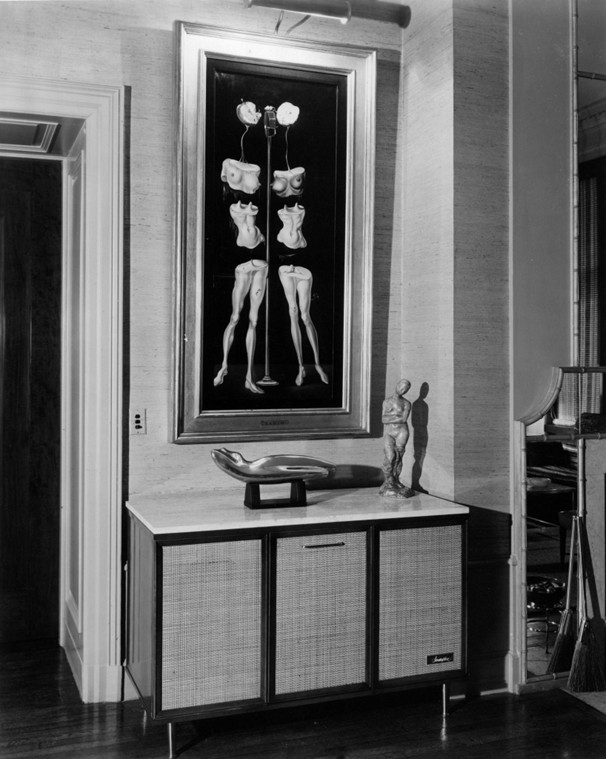
At the same time, interior designer extraordinaire William Pahlmann—whose vast array of papers and material samples reside at the Hagley Library—oversaw the design and furnishing of Rose’s houses on Beekman Place in Manhattan and further upstate at Mount Kisco. After Dalí’s Seven Lively Arts paintings had hung in the Ziegfeld for nearly a decade, they were moved to the game room of Rose’s Mount Kisco country estate in 1954. Just two years later, a fire broke out and destroyed the house much to the bereavement of Mr. Rose. Not only was Dalí’s Seven Lively Arts series consumed in the fire, but so was Rose’s other impressive collection of paintings, which included works by artists such as Utrillo, Renoir, Rembrandt, and Turner.
Because Rose’s estate had been thoroughly photographed, he was able to receive full compensation from insurance. The loss of the Seven Lively Arts series was evidently of such acute tragedy to Rose that he used the money granted him to commission Dalí to repaint the series. Most of the new paintings were done more or less to resemble their antecedents, but a few were altered significantly from the original compositions. For instance, Theatre became Sorcery; Boogie-Woogie became Dancing; and a different “art,” Sports, was even added to the mix.
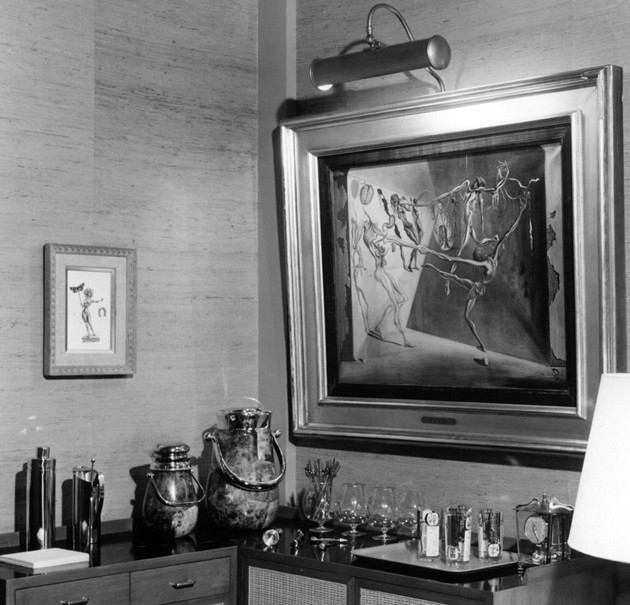
Up until now, the only record of the original paintings were black and white photos of them. These were taken directly for a spread in the January 1945 issue of Life magazine. Other photographs included snapshots taken of Cinema hanging in the lounge of the Ziegfeld Theater and even a few posed shots of Dalí among the works in a temporary studio, located on an upper floor of the theater.
As mentioned, Rose had photos of his house taken; nine of these were done by Florian De Narde Productions, a photography studio located in New York City. De Narde had been in operation since the 1920s and seems to have ceased operating around the late 1960s. Recently, these photos were rediscovered among the files of the William Pahlmann papers (Accession 2388). Not since 1956 has Dalí’s series been seen as it was in its final home at Mount Kisco. Perhaps more exciting, these photos contain the only color record of any of the original Seven Lively Arts paintings known to exist.
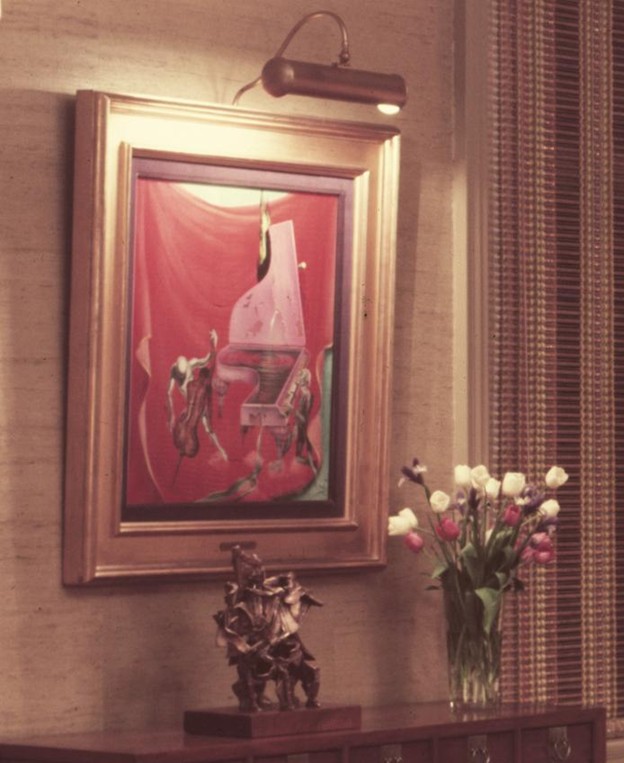
Four large-format Ekta chrome photos were taken of two rooms in Rose’s estate. Two of these photos covered a state room and two more documented the game room where Dali’s paintings resided. Unfortunately, the rest of the photos, including the closer views of the paintings, were taken in black and white. Nevertheless, the photos add welcome context to some of the works.
For instance, the names of a few of the paintings have proven contradictory between sources. Of note, what has been identified for years by every other source as Boogie Woogie was in fact labeled Jive on a nameplate seen in the Florian De Narde photo. Jive, a macabre work showing several elastic bodies thrashing about, was hung, perhaps fittingly, above the bar of the game room. Another notable piece in the photo is a small drawing on the left, which Dalí made for the cover of Rose’s autobiography, a book that Dalí also illustrated.
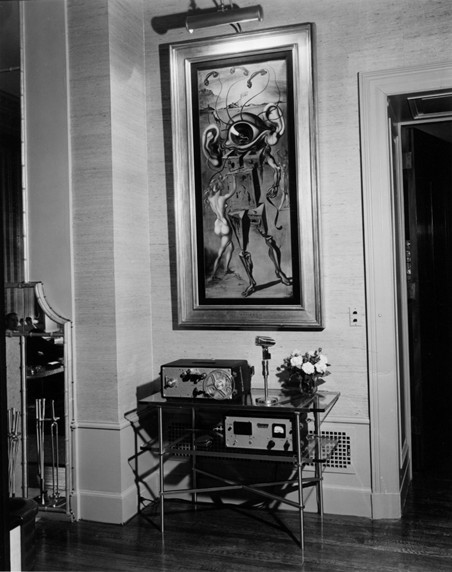
The photos of the paintings show us the careful arrangement of elements considered by Rose and Pahlmann. Cinema, a picture that shows a woman entranced by a monstrosity with a projector eye and telephone tendrils, is hung above a tape recorder. Similarly, Radio, which portrays two distorted human figures with apple heads on either side of a microphone, is hung above a Zenith Stratosphere console. Finally, Opera is seen installed next to the piano, an instrument which likely inspired much singing during parties.
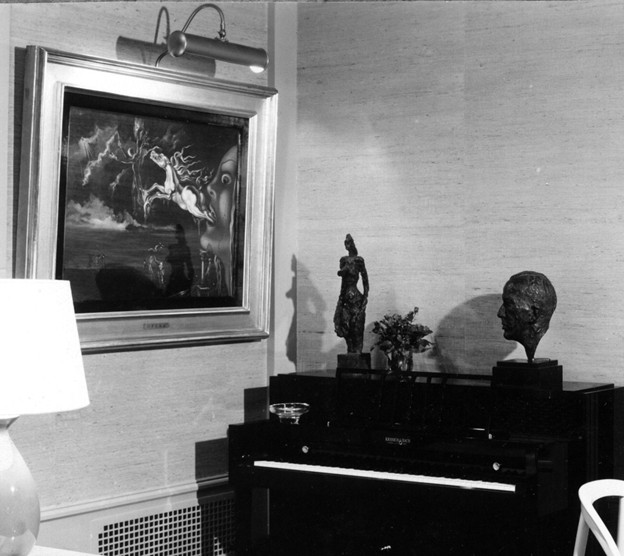
Other paintings like Theatre, Concert, and Ballet were hung above less specific decor. Of interest are the paintings’ non-uniform size, and in one of these photos we can see the unusual L-shaped frame for Theatre. Notably, Ballet, which portrays dancers transforming into crayfish and bugs, is ovular and carries the lighter qualities of 18th-century theatrical decor.
These weird and darkly whimsical paintings were among Dali’s best works of the 1940s. Though their fate is tragic, it is nonetheless fortunate that further knowledge of how and where they were displayed has surfaced. Not to mention, it is thrilling, after all these years, to be able to observe their original appearance, tantalizing as that glimpse is.
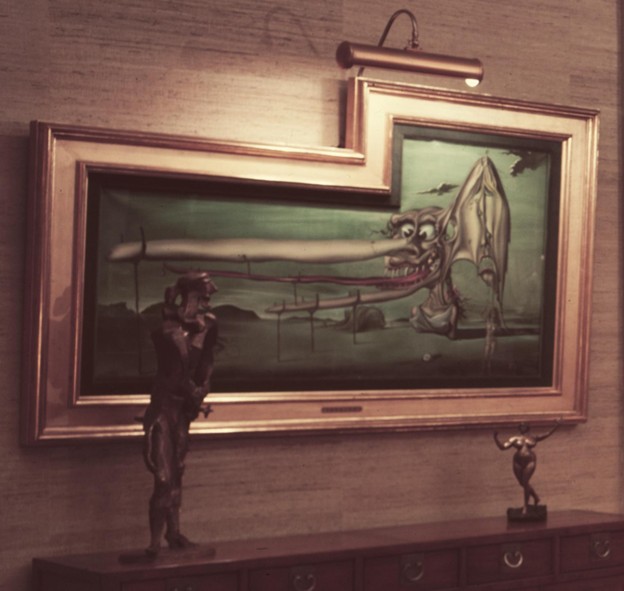
The photos of the Billy Rose Mount Kisco estate are available in the William Pahlmann papers, Accession 2388 (Series 10, Box 31). Information such as an invoice regarding Florian De Narde Productions’ photos of the Billy Rose Mount Kisco house can be found in Series 10, Box 1. Mention of the fire, photography and insurance located in ‘Pahlmania’ pamphlet from 1956, located in Accession 2388 Series 10, Box 27.
To access these collections, contact Hagley Reference Services at askhagley@hagley.org.
Alex Lattanzi is the Collections Assistant at Hagley Museum and Library
